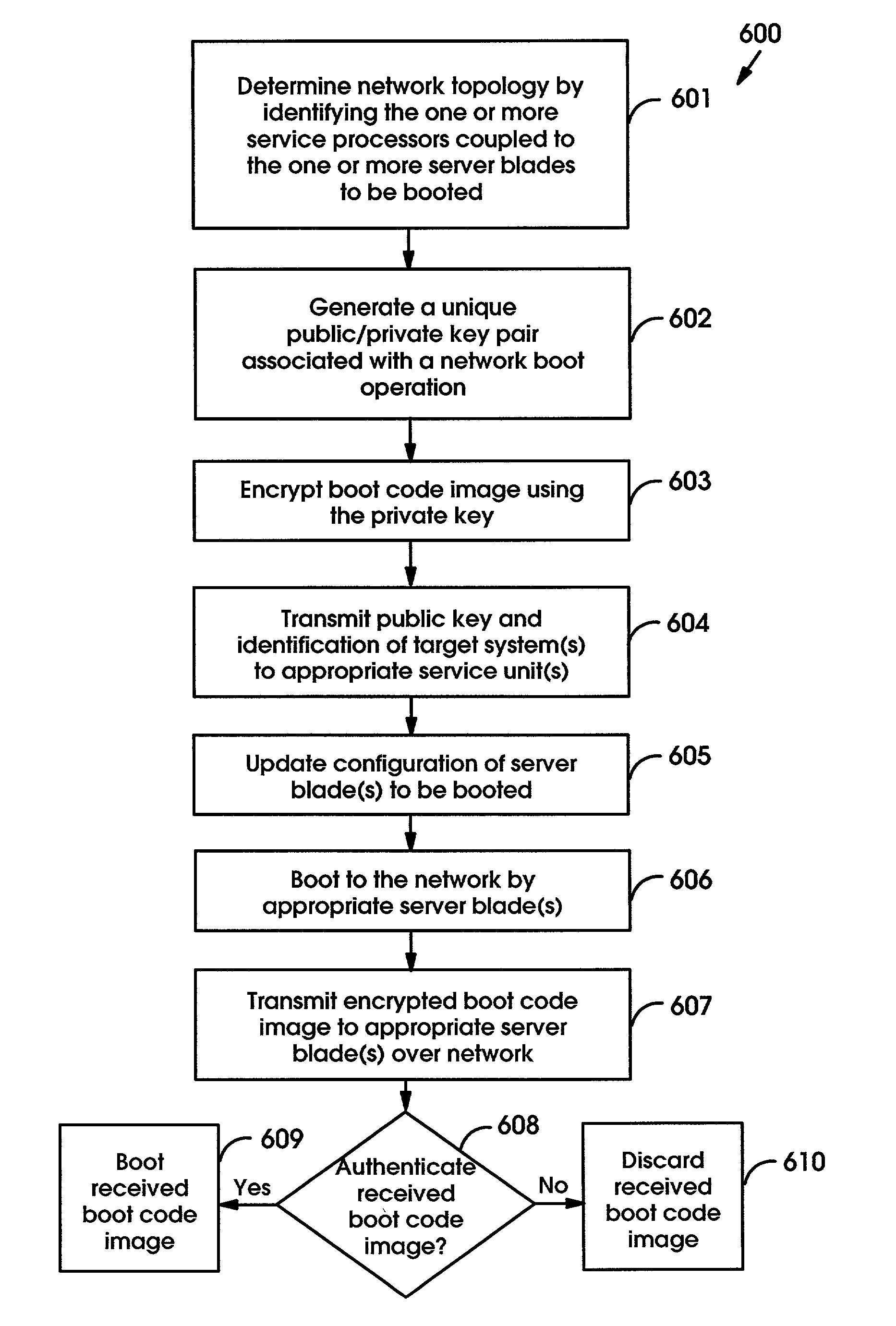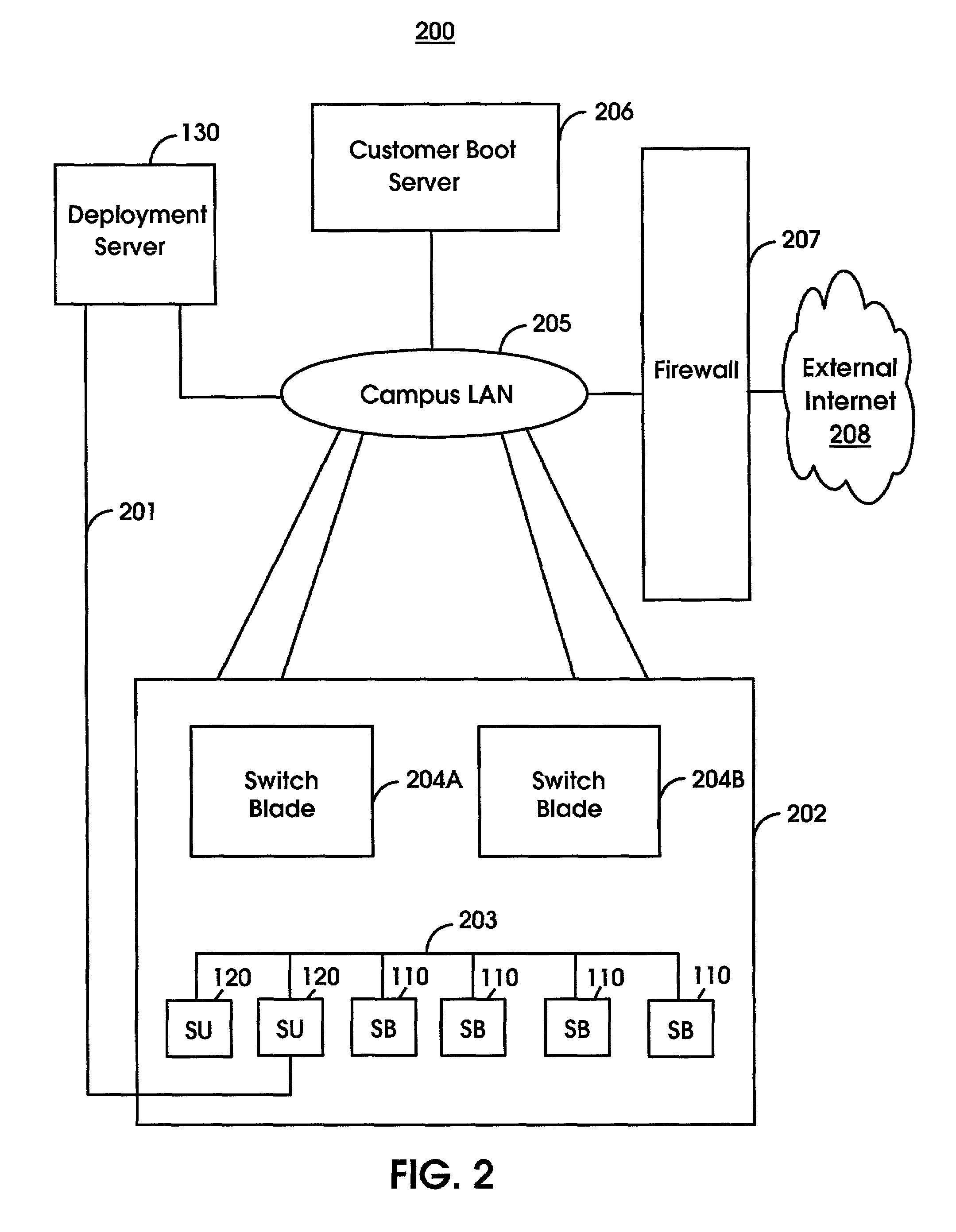Remotely booting devices in a dense server environment without manually installing authentication parameters on the devices to be booted
a server environment and remote booting technology, applied in the field of remote booting devices in a dense server environment, can solve the problems of security exposure to replay attacks, the boot device may not generate unique public/private key pairs for each network boot operation, etc., and achieve the effect of substantially reducing the exposure to replay attacks
- Summary
- Abstract
- Description
- Claims
- Application Information
AI Technical Summary
Benefits of technology
Problems solved by technology
Method used
Image
Examples
Embodiment Construction
FIG. 1—Dense Server Environment with Private Interconnections
[0031]FIG. 1 illustrates an embodiment of the present invention of a dense server environment 100 with private interconnections between the elements of the dense server environment 100. Dense server environment 100 may comprise a plurality of server blades 110A–D coupled to one or more service units 120A–B which may be connected to one or more boot devices, e.g., deployment server 130. Server blades 110A–D may collectively or individually be referred to as server blades 110 or server blade 110, respectively. A detailed description of server blade 110 is provided in the description of FIG. 3. Service units 120A–B may collectively or individually be referred to as service units 120 or service unit 120, respectively. A detailed description of service unit 120 is provided in the description of FIG. 4. A detailed description of deployment server 130 is provided in the description of FIG. 5. It is noted that the private connecti...
PUM
 Login to View More
Login to View More Abstract
Description
Claims
Application Information
 Login to View More
Login to View More - R&D
- Intellectual Property
- Life Sciences
- Materials
- Tech Scout
- Unparalleled Data Quality
- Higher Quality Content
- 60% Fewer Hallucinations
Browse by: Latest US Patents, China's latest patents, Technical Efficacy Thesaurus, Application Domain, Technology Topic, Popular Technical Reports.
© 2025 PatSnap. All rights reserved.Legal|Privacy policy|Modern Slavery Act Transparency Statement|Sitemap|About US| Contact US: help@patsnap.com



